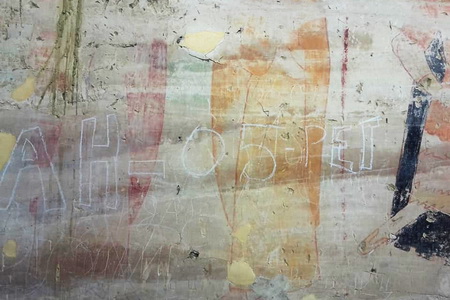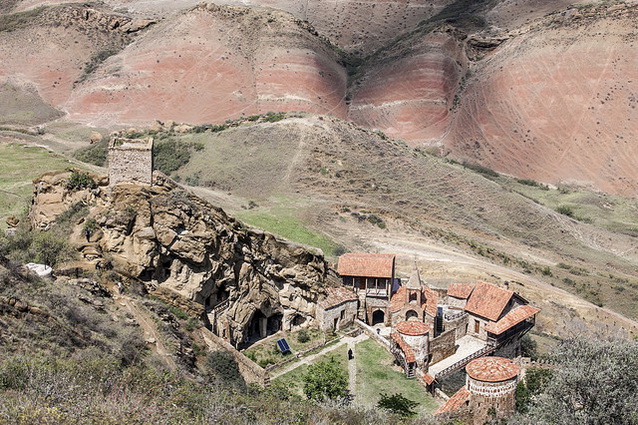Medieval frescoes vandalised at David Gareji complex in Georgia’s south-east

Some of the unique Medieval frescoes at the David Gareji complex, one of Georgia’s major cultural heritage sites, have been vandalised by tourists in the country’s south-east.
Unknown perpetrators scribbled their names over several paintings dating back to the 9th and 11th centuries at the main temple and refectory of the rock-hewn complex.
Discovered by a guide working at the site, the damage has already been studied by experts, who said the damage was repairable as it only affected the outer surface of the frescoes.

The scribbled text was added over 9th-11th century murals. Photo: Zviad Ananiashvili.
The Georgian Public Broadcaster reported the lines of text were made on the paintings using pencil, chalk and sharp tools.
Illustrating Georgia’s 13th century King Demetrius II and noblemen from the Kakheti province, the murals are among frescoes that have been subject of vandalism for years.
The National Agency for Cultural Heritage Preservation of Georgia says measures for protecting the works at the 6th century complex are difficult to implement due to remote location and natural phenomena at the site.
There are no informational banners warning tourists visiting David Gareji about vandalism being a punishable offence by law. In addition, no surveillance cameras are installed at the monument.

Located near Georgia’s border with Azerbaijan, David Gareji is a major cultural heritage site. Photo: Shalva Lejava/Europa Nostra.
The cultural heritage agency said adequate protection of the site would be ensured by a large-scale rehabilitation project involving international donors.
A prospect for locating funding and international involvement for preserving David Gareji emerged earlier this year.
The site was included on a list of Europe’s seven most endangered monuments of 2018 by the Europa Nostra cultural heritage organisation.
The major Europe-wide institution lists the disintegration of the rock formations comprising it as the principal threat of "irreversible deterioration” facing the complex.
 Tweet
Tweet  Share
Share